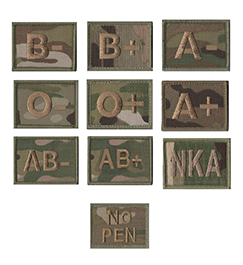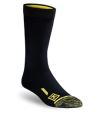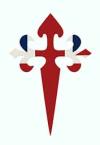Military blood group patches, also known as blood type patches, are patches worn by military personnel that indicate their blood type. These patches are typically worn on the uniform, often on the chest or arm, and are designed to be easily visible.
The purpose of military blood group patches is to provide medical personnel with critical information about a person's blood type in the event of an emergency. In combat situations, where soldiers may be injured and require emergency medical treatment, knowing a person's blood type can be life-saving.
In addition to military personnel, blood type patches may also be worn by emergency responders and other individuals who work in high-risk environments where they may require emergency medical attention. The use of blood type patches can help ensure that medical professionals have the information they need to provide the appropriate treatment quickly and efficiently.
Blood Group Patches/Badges are often Velcro backed and can be easily attached and removed.
A wide range of blood group patches are available in the Contact Left shop
Blood group patches/badges can be made in any colour or any design. Some patches for instance NKA stand for NO Known Allergies
The most common blood groups in order, from most common to least common, are:
- O positive (O+): This blood type is the most common, with around 38% of the population having this blood group. People with this blood type have both the O and Rh (positive) antigens.
- A positive (A+): This blood type is the second most common, with around 34% of the population having this blood group. People with this blood type have the A and Rh (positive) antigens.
- B positive (B+): This blood type is the third most common, with around 9% of the population having this blood group. People with this blood type have the B and Rh (positive) antigens.
- O negative (O-): This blood type is the most common of the Rh-negative blood types, with around 7% of the population having this blood group. People with this blood type have the O antigen but not the Rh antigen.
- A negative (A-): This blood type is the second most common of the Rh-negative blood types, with around 6% of the population having this blood group. People with this blood type have the A antigen but not the Rh antigen.
- AB positive (AB+): This blood type is the fourth most common, with around 4% of the population having this blood group. People with this blood type have all three antigens: A, B, and Rh (positive).
- B negative (B-): This blood type is the third most common of the Rh-negative blood types, with around 2% of the population having this blood group. People with this blood type have the B antigen but not the Rh antigen.
- AB negative (AB-): This blood type is the rarest, with around 1% of the population having this blood group. People with this blood type have both A and B antigens but not the Rh antigen.














